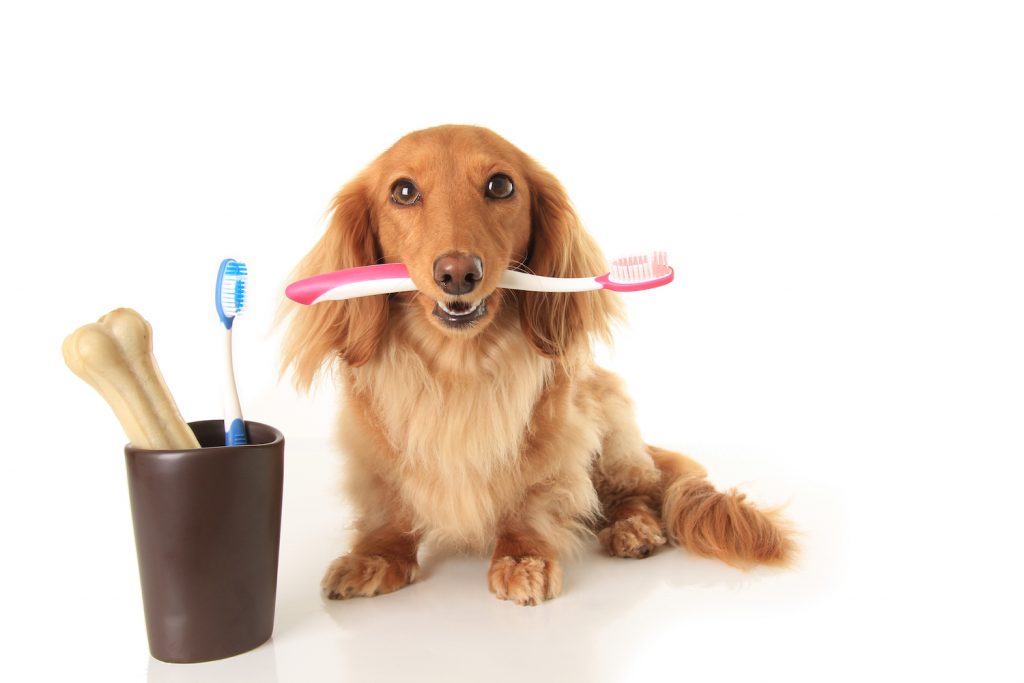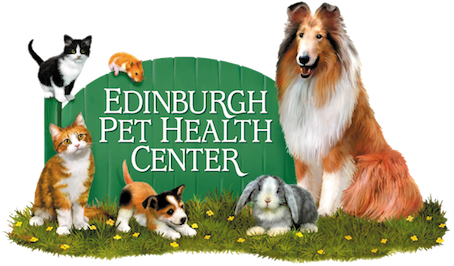Toothbrushing for pets
“Only brush the teeth you want to keep.”
Brushing teeth is the only surefire way to keep plaque and tartar from building up on your pet’s teeth. Most pets will accept this benign procedure, especially if you make it a rewarding experience for them. Bribe with treats if you must!
How to brush your pet’s teeth
Step 1: Start early with puppies and kittens
Start out right by introducing puppies and kittens to brushing when they are young. Begin when they are quiet and gently handle the mouth and head for a few minutes at a time. If they resist, try coming back to it later. Work on socialization, handling and calming until they are ready for brushing.
Step 2: Start slowly and gently
Choose a quiet time when you and your pet are relaxed, two to three times a week to start. With your pet facing you, start by massaging the lips and cheeks, then slide your finger under the lips and rub gums and teeth for a few seconds. Move slowly and speak softly, offering lots of praise. Follow this procedure with a small treat, scratching a favorite spot, or playing a favorite game. The idea is to make the encounter pleasant.
Step 3: Introduce the toothpaste
When your pet accepts these motions, place a pea-sized amount of veterinary toothpaste on your finger. Try pet friendly flavors like beef, poultry, seafood or malt. Gently rub the toothpaste over the teeth and gums. If your pet resists handling of their head, concentrate on relaxing them and go very slowly. If your pet acts as if they are painful, please call us for a dental evaluation before proceeding.
Step 4: Use a soft toothbrush
After your pet has become familiar with the toothpaste on your finger, try using a finger toothbrush, a soft plastic brush that fits on the end of your index finger or a soft pet toothbrush. Apply warm water to soften the bristles and place a pea-sized amount of toothpaste on it. Use gentle circular motions to clean teeth and gums using light pressure.
Step 5: Concentrate on key areas
Brushing the outer surface of the teeth is generally sufficient. All of the teeth need to be cleaned; incisors, canines, premolars and molars. Each pet will have unique areas of plaque build-up.
Step 6: Regular brushing is best
In the best of all situations, twice daily brushing would be ideal. Once a day is a realistic goal. Typically you can brush their teeth in 30-60 seconds or less. Some brushing is always better than no brushing.
What if I can’t brush??
Hope is not lost! Although there is no substitute for regular, daily brushing, there are many other options to help keep your pet’s teeth in good shape.
ORAVET – Homecare Kit
Oravet is a dental sealant that can be professionally applied to puppies or kittens during their spay/neuter surgeries or to older pets during a dental cleaning. Two weeks after the sealant is applied, you would then begin a once-weekly application of the homecare sealant. This will create a barrier on the teeth that repels plaque and bacteria.
T/D (tooth diet)
A specially formulated prescription diet designed to remove plaque when chewed. You can mix this food with your pet’s regular food or you can feed the T/D alone. Available in large or small bites for dogs and tiny bites for cats.
CET Chews for cats
Chewy treats containing an enzyme that will help remove plaque when chewed. They are given as a treat twice a day.
CET Chews for dogs
Rawhide chews with an enzyme-containing substance that works to break down and remove plaque when chewed.
Hexarinse Oral Rinse
Rinsing can be done for those pets that will not tolerate brushings. The ingredients fight plaque and bacteria build-up and it is pleasantly flavored.
Rope toys
Dental toys, some containing toothpaste in the fibers, act like dog dental floss.
Kong Toys
Hard thick rubber chew toys that can be stuffed with treats. They are unlikely to break teeth and they rarely are chewed into pieces. Beware of imitations and avoid thin rubber toys that can be destroyed and swallowed.
Regular professional cleanings
Semi-annual or annual dental prophylaxis will help to keep teeth clean, although periodontal disease may still occur without concurrent homecare.
Objects to Avoid
Bones, cow hooves and other hard objects should be avoided whenever possible. Any chew toy that is harder than teeth has the possibility of breaking teeth at various spots on the crown. If the break is low enough, sensitive pulp is exposed which is very painful to your pet. We recommend rawhide strips as the preferred chew substance.

